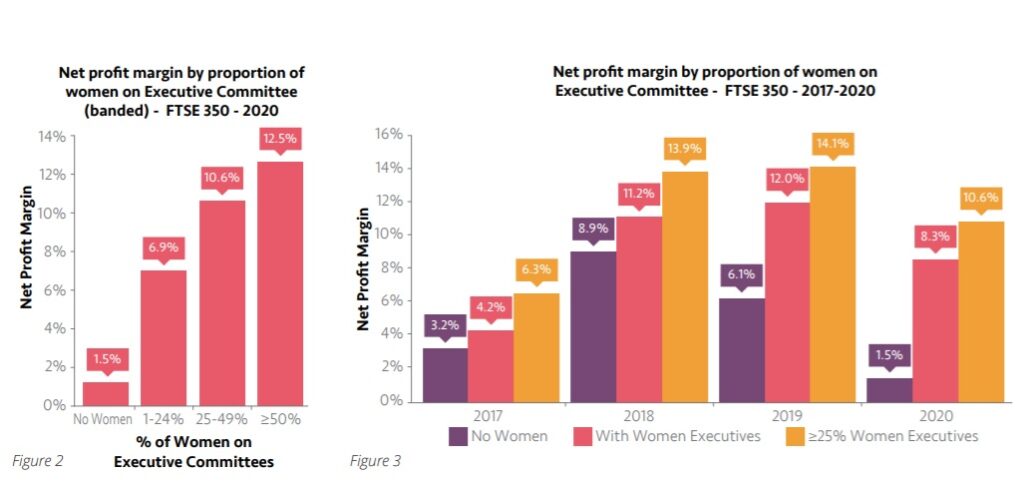
As many people I’m sure are aware, today (the 8th of March), is International Women’s Day! The purpose of International Women’s Day is to celebrate social, economic, cultural, and political achievements of women. The day raises awareness for women’s equality, and lobbies for accelerated gender diversity.
I have always personally enjoyed working with female CEO’s. The female leaders I have been lucky enough to work with have all been inspiring, confident, challenging, and all set high expectations of themselves, those around them and their organisations. It has been a pleasure working with them and delivering for them. But currently, the number of female CEO’s is not where it should be.
The current gender diversity situation
For the last five years, the Hampton-Alexander Review has been looking to increase the representation of women in senior leadership positions and on the board of FTSE350 companies. In 2016 when the review first launched, only 23% of board positions were occupied by women. Fast forward to present day and it is now 34.3% on all FTSE350 Boards.
Whilst Gibson Watts' Executive Search function was not able to be a part of it, we do strive for a diversity and inclusion agenda with every search we undertake, promising to shortlist at least one female leader, and currently have a placement rate of 50% for all positions being secured by women.
However, whilst there has been a significant increase in females taking up board positions, there remains too few female CEO’s in post. As of 2020 there were only five female CEOs within the FTSE100. Although there is a considerable difference between the number of female CEO’s in comparison to male, the average earnings gap has reduced substantially, the average female CEO now out-earns the average male CEO within the FTSE100.
Why is gender diversity so important?
The Women Count 2020 report looked at profitability of companies with women on the board, compared with those that have no women. “The UK economy and shareholders have missed out on an additional £47 billion in pre-tax profit”, authors Margaret McDonagh and Lorna Fitzsimons noted.
Analysis of data found the gap between the net profit margin for companies without any women on their executive committees and those which did embrace a level of gender diversity in senior positions was the biggest they had recorded in the five years of producing the research. This is illustrated in the graph below.

Source: ExecPipeline
A recent study published by Cranfield University backed this up further. It showed that when organisations showed greater gender diversity, they are more profitable, and those which have women on their boards enjoyed higher market valuations.
Clearly there is more to be done, and whilst female representation among boards across the FTSE100 is increasing, this is mainly reflected in the positions of Human Resource Directors and Company Secretaries. According to the Global Gender Gap Report 2020, it will take another 100 years to achieve gender equality based on the current rate of progress.
How can organisation’s help improve gender diversity in the workplace?
Creating targets is a tool for change. When implemented thoroughly and ambitiously, targets create scrutiny and unrooted bias across key talent management processes. However, it is important these are adhered to and procedures and processes are put into place to help facilitate this.
Organisations need to continue to address the shortfall of female leaders. A good starting place could be to:
- Identify emerging female leaders within your organization. Mentor, embrace, and support them.
- Define the desired results of greater levels of diversity and equality.
- Identify the actions leaders must take to generate those results.
- Transform or develop values and expected behavioural norms that drive those actions.
- Create rituals and cultural experiences that support those beliefs that drive actions and lasting change.
There are many organisations out there supporting gender equality, the Hampton-Alexander Review was a business-led initiative that most global executive search firms took part in to help lead the way. Others like Ernst and Young (EY) publish an annual Women to Watch report, highlighting 100 inspiring senior women business leaders well-suited for positions on FTSE 350 companies now or soon.
In the US, the Department of Labour now ranks soft skills as more important to the fundamental success of a company than technical skills. Soft skills, or emotional intelligence, can also include traits like communication, critical thinking, or collaboration. It is this area where women have been proven to hold a key advantage over men. In a recent study by Hay Group, a global consultancy, they found that women outperform men in 11 out of 12 key emotional intelligence competencies. The same study proposed that if men employed similar levels of emotional intelligence, they would be far more successful.
Conclusion
All business owners face challenges, from keeping investors happy, maintaining cash flow and consistent growth. Yet, women continue to face additional and unique obstacles they need to overcome, simply because of their gender. Organisations will need to do more to support women who want to have a career and a family. Organisations like Patagonia offered “family leave for men and women” back in 1984, as well as having onsite childcare services or school bus runs from company offices.
Gender diversity in the workplace policies will need to change at the highest level if there is to ever be any true parity. Until then organisations like Gibson Watts, and others, will continue to do what we can to support a diverse and inclusive hiring agenda for all our clients.
Written by Josh Smith, Head of Executive Search at Gibson Watts

